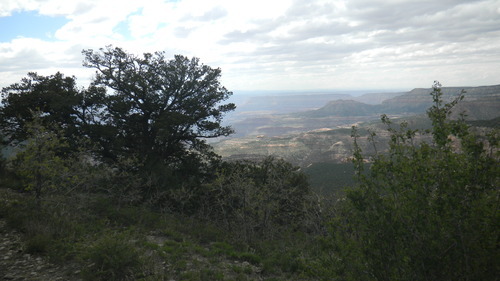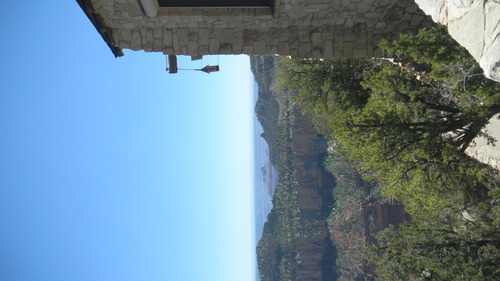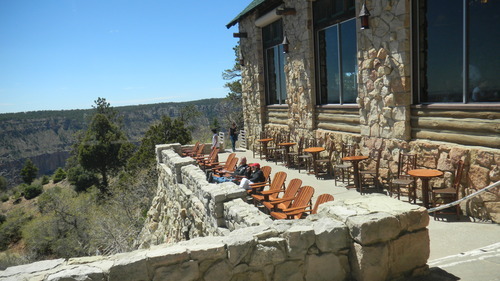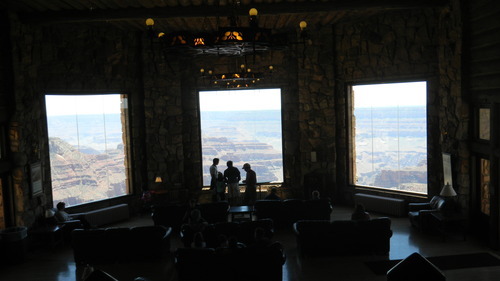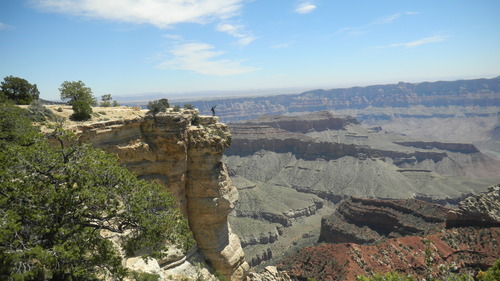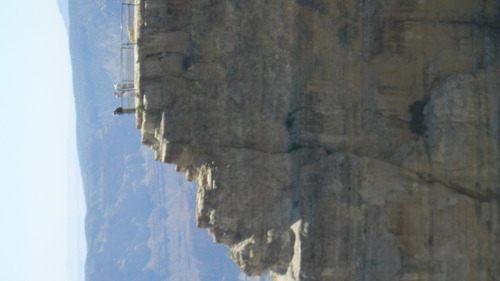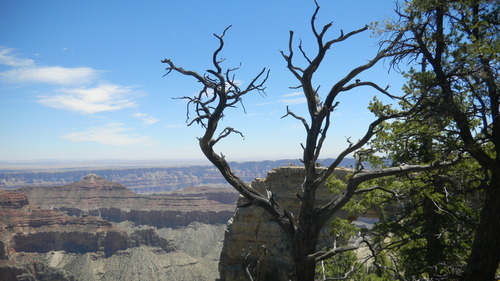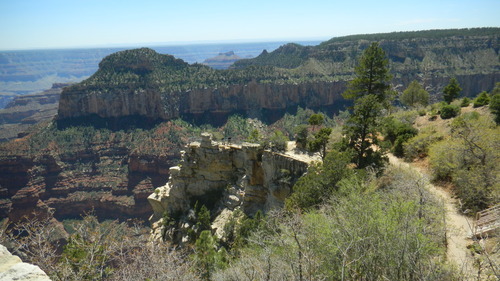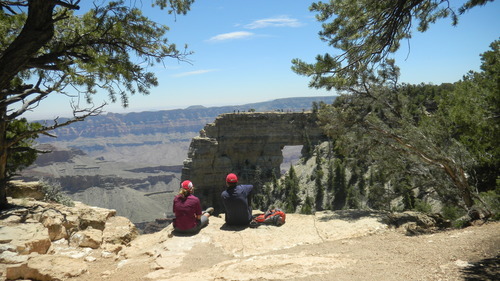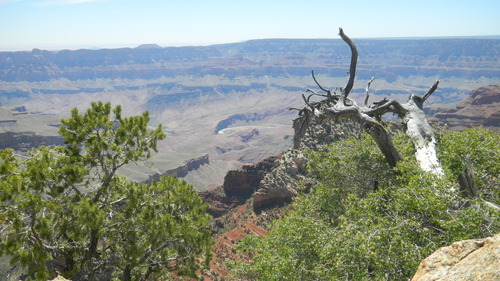This is an archived article that was published on sltrib.com in 2011, and information in the article may be outdated. It is provided only for personal research purposes and may not be reprinted.
North Rim, Grand Canyon National Park • Talk to travelers about the differences between the North and South rims of Grand Canyon National Park, and most will say the north offers more solitude.
Only 10 miles separate the two edges of the mile-deep chasm, but the north is about 1,000 feet higher in elevation, is closed during the winter and receives about a tenth the visitors the south does.
"The views themselves are even more spectacular than the South Rim," said Greg Maxwell of Reston, Va., who took the 215-mile drive that connects the entrance stations of the two rims with his wife, Diane. "There are fewer people. It's a little more remote. And the view from Cape Royal is about as panoramic as you get."
The vista from that overlook offers the only view of the Colorado River that can be seen on the North Rim. The .6-mile round-trip hike — one of 13 major hikes on this side of the Grand Canyon — offers views of the Angels' Window Arch and a chance to walk on top of that natural feature. It is also possible to see Unkar Rapid.
John Rich, whose family has owned the Jacob's Lake Lodge about 45 miles north of the rim since 1923, said there are three reasons to visit the North Rim. He thinks the views are better, can be enjoyed in relative solitude and the drive into the national park ranks among the most beautiful in the entire system.
The drive into the North Rim features views of the snow-capped San Francisco Peaks near Flagstaff, Ariz., as well as alpine scenery and meadows, where mule deer can often be seen.
"You don't have to stand in line to see the Grand Canyon," said Rich, whose 62-unit lodge is open year-round and often fills to capacity in the summer. "There are places where you can sit all day and not see another person."
That said, fairly limited facilities on the less-developed Grand Canyon Rim make planning a must. The historic lodge on the edge of the North Rim, designed by architect Gilbert Stanley Underwood for the Union Pacific Railroad, fills nearly every night. So does the North Rim Campground.
Making reservations to stay overnight at either the lodge or the campground is highly recommended.
Carla Norrell, the front desk manager at the North Rim Lodge, said booking as far in advance as possible — sometimes up to a year — is a good idea. That said, cancellations regularly occur and rooms open up almost nightly.
The only other lodging possibilities close to the park are the Kaibab and Jacob Lake lodges, both of which often fill as well. Fredonia, Ariz., and Kanab also are possibilities, though they are about an hour away. There are also three small lodges near Lee's Ferry along Highway 89A.
As for camping, there are two developed U.S. Forest Service facilities near the park. DeMotte, 16 miles north of the park, often fills on summer weekends, while Jacob Lake seldom does.
Charlie Simpson of the Grand Canyon Association, who works at the Kaibab National Forest Visitor Center near Jacob Lake, said there is also a private facility near there with full RV hookups.
Some campers also use free dispersed sites on the maze of U.S. Forest Service dirt roads, some that lead to viewpoints of the Grand Canyon and even a mountain bike trail outside the park.
Bobby Matthews, a fire prevention officer for the U.S. Forest Service, said it is legal to camp in many of these forested areas, but he urges campers to be careful with fire.
Riding mules down a portion of the North Kaibab Trail — the only North Rim trail that leads to the bottom of the canyon — is another popular activity where getting a reservation is an excellent idea, though some rides can open up. Cost is $40 for the hourlong rim trail ride or $75 for a half day. Call 435-679-8665 for information and reservations.
In the spectacular Sun Room of the historic North Rim lodge, there is a bronze sculpture of Brighty, a mule who lived from 1892 until 1922 and was the inspiration for Marguerite Henry's classic children's book "Brighty of Grand Canyon." Legend has it that rubbing the sculpture's nose brings good luck and, indeed, the nose is shined brightly.
Visiting the lodge is a must when coming to the North Rim. The structure — which opened in 1928, burned down in 1932 and was rebuilt and reopened in 1937 — is a classic national park building. Constructed by the Union Pacific Railroad along with similar lodges in Bryce and Zion — visitors would take the train to Cedar City and then board buses to the parks — the lodge is located right on the rim.
Picture windows in the Sun Room or the dining area provide views of the canyons. Visitors can order a drink and sit reading a book on lounge chairs on two patios that overlook the Grand Canyon. Bright Angel Point is visible from the patios.
While most of the 13 North Rim hiking trails can be done in a day, one that can't is the North Kaibab. This is the only trail that goes to the bottom of the canyon, and a round-trip hike is 28 miles with a 6,000-foot elevation gain and drop. Many hikers shoot to hit various points along the way. Permits are required for overnight stays in the canyon.
Though facilities are limited and the season is shorter — usually from May 15 to Oct. 15 — the North Rim of the Grand Canyon is a throwback to simpler times and, for Wasatch Front residents, a much shorter drive than visiting the more developed South Rim.
Twitter: @tribtomwharton


